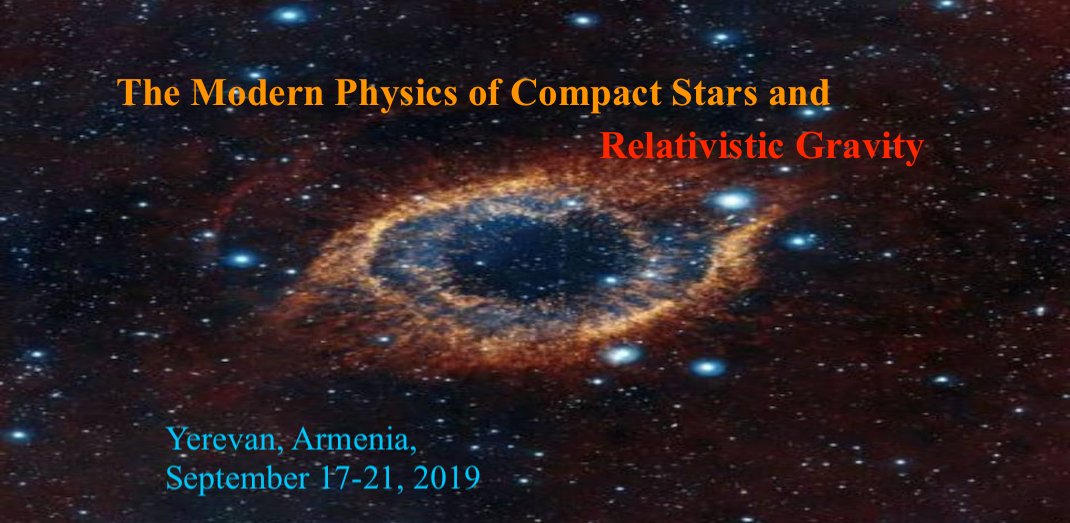Speaker
Description
Nowadays strong magnetic field has been observed or expected in compact stars or during
relativistic heavy-ion collisions. In particular, magnetars may have a huge magnetic field of
O(10 15 G) at the surface. We here consider the transport properties of Dirac particles in the
presence of a strong magnetic field. As a phenomenological implication, the heat conductivity is
interesting and important in the context of the thermal evolution of magnetars: The heat
conductivity is, in general, a tensor in the coordinate space,$\kappa_{ij}$ (I,j=x,y,z); the off-diagonal
components represent the thermal Hall conductivity.
First, we discuss the electron contribution in the crust of magnetars, since the main
mechanism of thermal transport is responsible for conducting electrons. The diagonal
components give the thermal currents proportional to the gradient of temperature. It comes
from some dissipative effects for electron propagation and has a classical analogy to the
Drude-Zener formula. On the other hand, the off-diagonal components consist of two parts
$\kappa_{ij}$ =$\kappa_{ij}$ I + $\kappa_{ij}$ II ($i\neq j$), where the first term represents the dissipative contribution similar to the
diagonal components and has been studied by many authors [1]. However, there is a little
study about the second term, which is a genuine quantum effect and gives a non-dissipative
contribution. It comes from the field-dependent level density and has no classical analogy [2]:
the Landau levels become essential in the strong magnetic field and the density of states
(DOS) is a field-dependent quantity, while DOS is not field dependent in the classical limit.
Sometimes $\kappa_{ij}$ II has been missed in the literature. We elucidate its contribution by way of the
Kubo formula and estimate its importance.
Next, we discuss the anomalous thermal Hall effect in quark matter, which may develop in the
core of compact stars. Recently we have shown a possibility of the anomalous Hall effect in
dense QCD matter by the use of the Kubo formula [3], where inhomogeneous chiral phase
(DCDW phase) is realized [4]. The important consequence is that the Hall conductivity $\kappa_{ij}$
becomes nonvanishing even in the absence of the magnetic field. It has a geometrical origin
and modifies the Maxwell equation as in the Weyl semimetal [5]: the energy spectrum
exhibits asymmetry with respect to the zero energy to produce a kind of “magnetization” in
the DCDW phase, and the Hall current flows in the direction perpendicular to the
magnetization. Since thermal conductivity is closely related to conductivity $\kappa_{ij} $, we can expect
the anomalous thermal Hall effect there as well [6]. It then should give another contribution to
the thermal conductivity independent of the magnetic field. We discuss the interplay of these
terms in the non-dissipative contribution $\kappa_{ij}$ II .
Finally, we briefly discuss some implications of the non-dissipative thermal Hall conductivity
$\kappa_{ij}$ II , in the context of thermal evolution of magnetars.
[1] A.Y. Potekhin, J.A. Pons, D. Page, Space Sci.Rev. 191 (2015) 239.
[2] P. Streda, Solid State Phys. 15 (1982) L717.
[3] T.Tatsumi, R. Yoshiike, K. Kashiwa, PLB 785(2018) 46.
[4] E. Nakano and T. Tatsumi, PRD 71 (2005) 114006.
[5] N.P. Armitage, E.J. Mele, A. Vishwanath, Rev.Mod.Phys. 90, 015001
[6] L. Smrcka and P. Streda, J.Phys. C10 (1977) 2153.
